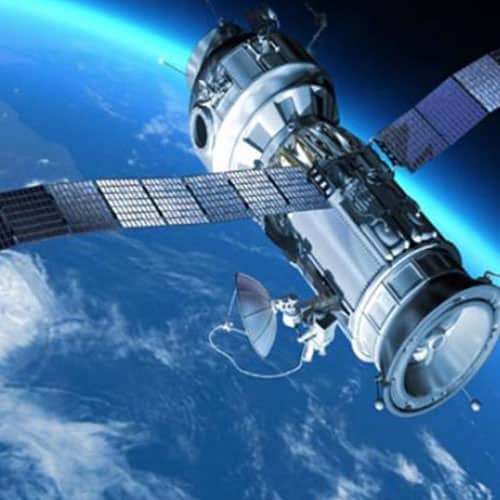


Senior Assistant Editor | Defence & Intelligence
Over the last few years, China has been increasing its economic and military presence in the Indian Ocean Region (IOR). The China-Pakistan Economic Corridor (CPEC), currently estimated to be worth $87 billion, is a multi-purpose project which includes development of the deep-sea port of Gwadar, and is viewed as an attempt by the authorities in Beijing to increase their strategic footprint in IOR. This increasing influence has often irked countries in the region, including India.
India and China, the two Asian giants, are known to have shared a complex relationship, often marred by territorial disputes. The recent face-off along the Line of Actual Control (LAC) in Ladakh has seen various twists and turns in the last few months.
In June, satellite imagery confirmed that China had built new structures near the site of border clash with India, escalating the possibility of further conflict — even as the two sides were working towards disengagement.
The current border tension has brought to the fore the power of Space technology, especially Earth Observation (EO), which plays a key role in monitoring the situation on the ground, thereby enabling the decision-makers to plan and mobilize resources. No wonder that the two countries have been scaling up their Space/EO programs to increase their surveillance and monitoring capabilities.
In 2019, India and China were the top two spenders in the Space sector in Asia. In its budget for 2020-21, India allo-cated INR 13,479.47 crore ($1.9 billion) for the Department of Space (DOS), a 7.5% increase from last year, and a 45.2% rise since the 2015-16 budget.
On the other hand, according to the Economic Survey of India 2019-20, China has spent seven times more than India on its Space program. Although opaque, China’s 2017 Space budget was estimated at $8.4 billion by the Organization for Economic Cooperation and Development. If China maintains about 6% per year economic growth to 2030 and scales the space budget in proportion to the overall economy then China would be at about $15 to 20 billion for a 2030 Space budget.
INDIA
India needs to proactively consider utilizing its Space capacities for safeguarding its territorial interests. Although the Indian Space Research Organisation (ISRO), the nodal Space agency, is a civilian agency, it also caters to defense and intelligence requirements. Since its inception in 1965, ISRO has launched 119 spacecraft, which include both military and civilian use satellites.


The Cartosat satellite series is part of the Indian Remote Sensing Program, and is used for Earth’s resource management, defense services and monitoring. Cartosat-3 is the ninth satellite in this series, a third-generation advanced satellite having high-resolution imaging capability. Notably, the Cartosat-2 series played a crucial role in the 2016 “surgical strike”. It has a resolution of almost 0.65 meter and a revisit of 90 minutes. This satellite is reportedly to be capable of capturing a minute-long video of a fixed spot through its agile attitude control.

ISRO also has a constellation of synthetic aperture radar (SAR) satellites that allow night and cloud viewing — RISAT (Radar Imaging Satellite). RISAT-2BR1 is the second spacecraft in a new series of RISAT-2B satellites which is nearly identical to the first satellite. It is an all-weather radar reconnaissance satellite, which is able to image the Earth regardless of clouds obscuring the surface. RISAT-2B series enhances India’s defense capabilities, and the RISAT constellation complements optical imaging satellites, such as the Cartosat series. It can be used for monitoring troop movement and military build-up.

Rightly termed “Spy in the Sky”, India’s first electronic surveillance satellite, EMISAT adds teeth to situational awareness of the armed forces, as it provides location of hostile radars. This Space-based electronic intelligence, or ELINT, can monitor electronic or human activity on the India-China and India-Pakistan border.

Hyper Spectral Imaging Satellite (HysIS) is often dubbed as “Sharp Eye”. Central to HysIS is an optical imaging detector chip, which has been indigenously designed by the Space Application Centre (SAC) of ISRO. HysIS is believed to have the capacity to detect and identify hidden targets. This means even if the resolution of an optical device is low, it can be detected and classified if its spectral signature is known. For example, man-made objects on sea surface, tanks in the desert, camouflaged missile launchers, etc. It also has advanced target detection and missile cueing systems for UAVs and manned combat aircraft.
CHINA
China National Space Administration (CNSA), the country’s national Space agency, is responsible for its Space program. Even though it is difficult to determine China’s actual Space capabilities, especially since its programs are cloaked in layers of secrecy, in view of the past and current capacity, it won’t be incorrect to say that China is ahead of India in terms of the overall Space infrastructure.


China has recently launched the classified Shiyan-6 (02) satellite, which, according to the State media, is aimed at “Space environment study and related technology experiments”. A similar description is used for Yaogan satellite series that is believed to be used for military reconnaissance.

Claimed to be “mainly used for civilian purpose”, the Gaofen 9-03 is the third satellite to be launched under the Gaofen 9-series. Chinese media reports suggest that all payloads carried optical Earth-imaging cameras with a resolution of better than 3.3 feet, or 1 meter. The Gaofen fleet includes satellites with optical, infrared and radar imaging observatories. The HEAD-5 microsatellite can carry out on-orbit information collection, including that on ships and aircraft, and the Internet of Things (IoT).

The Gaofen 9-02 and HEAD-4 satellites will be used for the new “EO technology experiment”. The Gaofen 9-02 is an optical Remote Sensing satellite which is capable of providing photographs with a resolution of about one meter and will also support construction of projects under China’s Belt and Road Initiative (BRI). The HEAD-4 will help in collecting information on ships, aircraft and the IoT.

China has also launched three Yaogan-30 Group 6 surveillance satellites, which will be used for electromagnetic environment detection and related technological tests. The Yaogan series is believed to be operated by the Chinese military, primarily for intelligence gathering. However, analysts suggest the Yaogan-30 family of satellites could be testing new electronic eavesdrop-ping equipment or helping the Chinese military track US and other foreign naval deployments.

Beijing wants to reduce its reliance on foreign technology in topographic mapping, and Gaofen-7, a high-resolution Remote Sensing satellite, is a step in that direction. Capable of providing stereoscopic imagery, Gaofen-7 is a sub-meter resolution optical satellite that can map the entire world’s land stereoscopically, with a margin of error of less than a meter.

The Ziyuan III 02 is the second satellite in the Remote Sensing mapping system that China aims to build by 2030. This satellite will join i Ziyuan III 01, to create a network and capture high-defini-tion 3D images and multispectral data. The Ziyuan program seems to cover different civil and military EO programs. Though the new ZiYuan-3 series will be used for stereo mapping, its application does cover national security.
The Chinese Space program continues to mature rapidly. For the People’s Liberation Army (PLA), Space is critical to the overall warfare. Although India is trying to catch up, it has to do a great deal of work in terms of number of launches and manufacturing capacity.
Formalizing missions:
India needs to make rapid progress in the formalization of definite missions of the Defence Space Agency (DSA) and the Defence Space Research Organisation (DSRO). The Indian government established DSA and DSRO in April 2019 and June 2019, respectively — in an attempt to modernize the armed forces with the integration of Space technology. DSA will develop capabilities to protect India’s interests in outer Space and deal with the threat of a Space wars. DSA will also guide the development of various capabilities and platforms, including co-orbital weapons, to protect the country’s assets in Space. On the other hand, DSRO is tasked to provide technical and research support to DSA.
Expand navigation operations:
China recently completed Beidou Navigation Satellite System (BDS), which is fully functional now. Beidou provides an accuracy of 3.6 m (public), 2.6 m (Asia Pacific, public) and 10 cm (encrypted). China is promoting its use in the countries signed-up for BRI. China’s push for a new navigation network was driven by a desire to reduce its dependence on America’s GPS, particularly in its armed forces.
India’s has its own navigation system, Indian Regional Navigational Satellite System (IRNSS), also known as NavIC. To date, ISRO has built nine satellites in the IRNSS series, of which eight are currently in orbit, though there are plans to increase the constellation size to eleven. NavIC provides a position accuracy of 5 meter to civilians and 10-20 cm for encrypted/military purpose.
BDS has an advantage over its Indian counterpart because it is a global system with 35 satellites in LEO operating in the L1 and L2 bands which are common to other global GNSS systems like GPS, GLONASS and Galileo. NavIC will work with eight Geosynchronous satellites and offers regional navigational facility. However, NAVIC has a higher location precision and works better in urban and mountainous regions.
Accelerate launch targets:
Earlier this year, Beijing released a blue book setting out China’s Space achievements and future missions, and announced that it is going to send more than 60 spacecraft into orbit with over 40 launches in 2020. China will be mainly focusing on the completion of three major missions: Beidou-3 (fully operational), the Lunar exploration and the network of Gaofen observation satellites.
India needs to launch more EO satellites to deliver better imaging capabilities. In 2019, India only launched seven spacecraft out of which four were EO satellites, whereas China completed 34 Space launches, more than any other country in the world.
ISRO is planning to launch 10 EO satellites by March 2021, along with 26 missions, including Gaganyaan and Chandrayaan. Also in the pipeline is a new series of Remote Sensing satellites, Geo-Imaging Satellite-1
(Gisat-1) and Gisat-2, which will enhance India’s land mapping capabilities. Gisat has both military and civilian use.
Faster replacement:
India lags in terms of building satellites that can be replaced before their expiration. When an old satellite expires, it leads to a data gap that is filled only when a replacement satellite is launched. Operating an updated fleet means precise and real-time information, which further helps in better decision-making.
Upsurge manufacturing:
In terms of number of launches per year, China clearly has an edge over India. The lesser number of missions clearly indicates the lack of production capabilities within ISRO to support the growing demand in the country for Space-based services. The electronic components and systems of Indian satellites are generally imported. These components have to meet strict quality standards and have to be reliable and work through the entire mission life of a satellite (15 years). The requirement for such components is only going to increase as the Space agency becomes more aggressive in pursuing new missions. India should, therefore, consider increasing its workforce and in-house capacity to meet the demand, apart from actively involving private players in the Space industry.
Technology has made modern warfare almost contactless. Securing borders requires surveillance and Remote Sensing, realtime situational awareness, information processing and communication. Satellites have, therefore, emerged as strategic assets, playing a critical role in this process. For India to catch up with China on this front, it will have to make comprehensive efforts around research, development and innovation.
© Geospatial Media and Communications. All Rights Reserved.